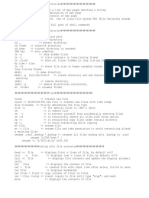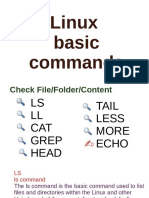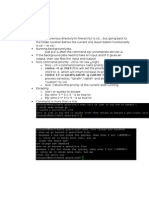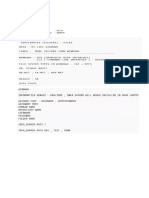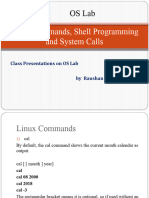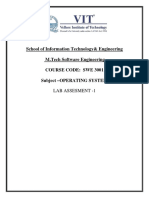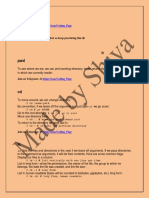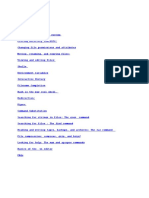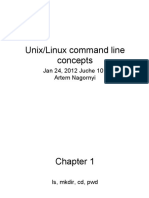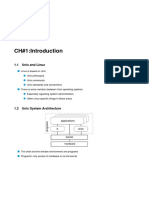0% found this document useful (0 votes)
41 views1 pageWorking With Text Files in Bash
The document introduces essential Bash commands for viewing and manipulating text files, including 'cat', 'less', 'head', and 'tail'. Each command is explained with its usage, options, and examples. These commands are crucial for inspecting and understanding text file contents.
Uploaded by
helio.campos.brasilCopyright
© © All Rights Reserved
We take content rights seriously. If you suspect this is your content, claim it here.
Available Formats
Download as PDF, TXT or read online on Scribd
0% found this document useful (0 votes)
41 views1 pageWorking With Text Files in Bash
The document introduces essential Bash commands for viewing and manipulating text files, including 'cat', 'less', 'head', and 'tail'. Each command is explained with its usage, options, and examples. These commands are crucial for inspecting and understanding text file contents.
Uploaded by
helio.campos.brasilCopyright
© © All Rights Reserved
We take content rights seriously. If you suspect this is your content, claim it here.
Available Formats
Download as PDF, TXT or read online on Scribd
/ 1







